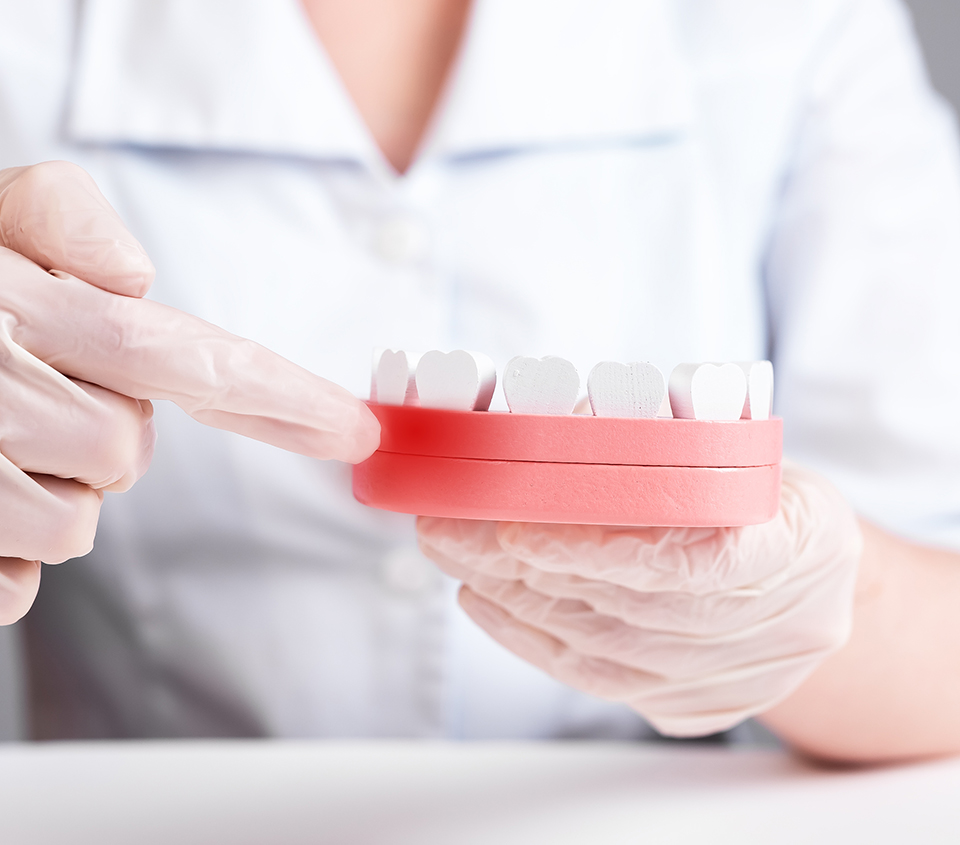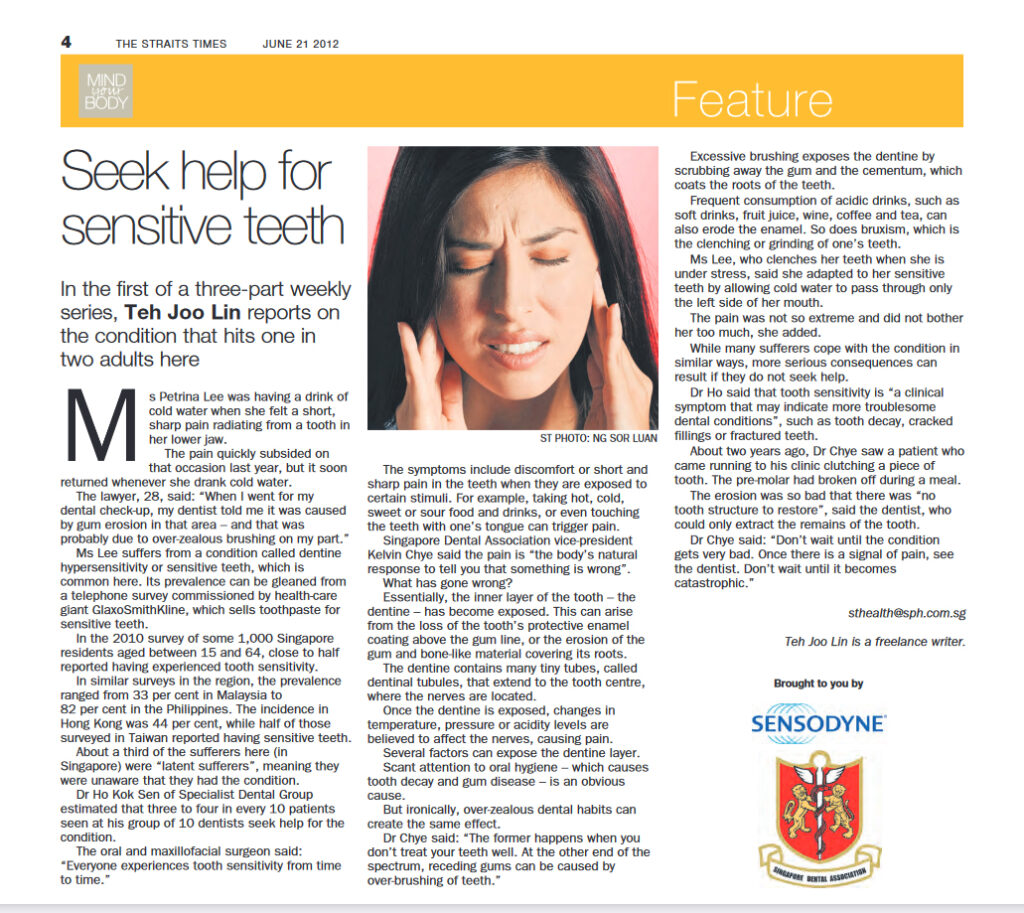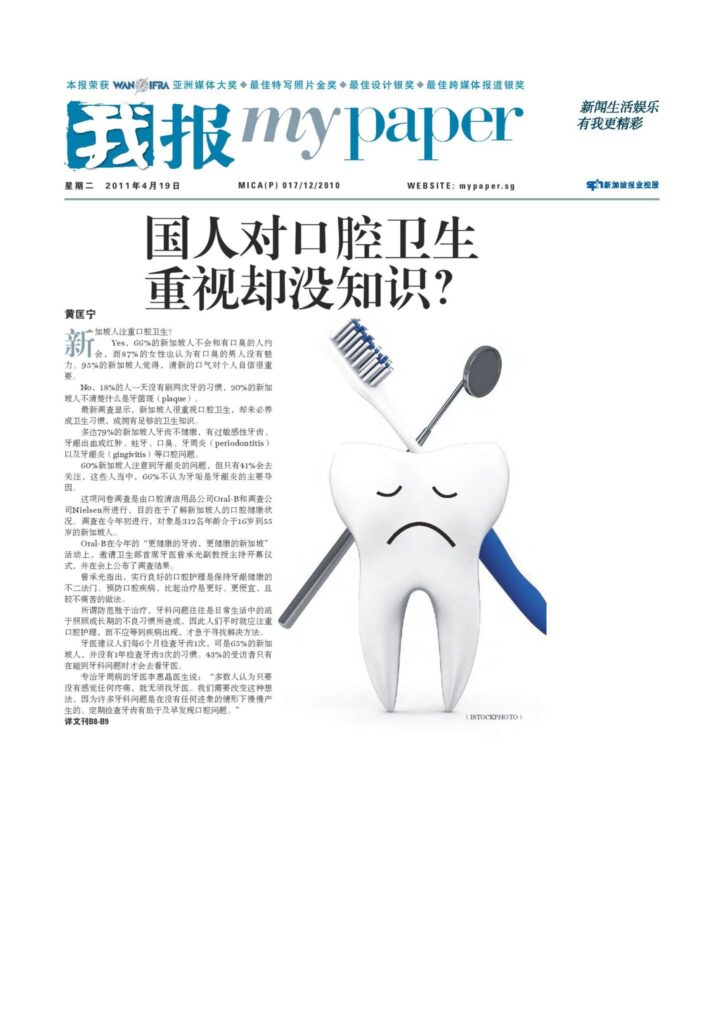Gum treatment in Singapore
Gum treatment addresses issues like gum disease and recession to restore gum health. Schedule a 45-minute consultation to see how treatment can improve your gums.
Or call: +65 6734 9393

Healthy gums results in a
healthy body
Gums are the pink protective tissue that covers the bony structure of our jaws and parts of the roots of our teeth. Normal gums hug firmly around our teeth but diseased gums do not attach to our teeth due to inflammation from bacteria. If not treated, a person could suffer from loss of supporting bone and teeth. Gum treatment controls and stops this process.

What is gum treatment?
Periodontics is the branch of speciality dentistry that deals with the treatment of gum diseases and the other structures around the teeth and jaw bones.
Gum treatment aims to control and stop gum disease.
These procedures include scaling and root planing, gum surgery, crown lengthening, dental implants and gum grafts.
What is involved in a gum treatment procedure in Singapore?
Common symptoms of gum problems include the following:
- Bleeding gums
- Swollen gums
- Receding gums
- Shaky teeth
- Teeth sensitivity
- Increasing spaces between teeth
- Bad breath
Our dental specialist/ dentist will find out the details of your medical and dental history, go through a consultation and examination and take a digital X-ray of your teeth to enable a thorough and detailed diagnosis. Gum disease is always best prevented. However, if it has already caused destruction, treatment usually addresses the calculus accumulation and oral hygiene techniques to halt the disease.
The goal of treatment is to promote the reattachment of healthy gums to teeth and to stop disease progression.
Simpler procedures usually take about 30 minutes. More complex or extensive ones may take up to 2 hours. Depending on the severity of the gum problems, occasionally 2 or more visits over several weeks are required.
Most of the time, patients are able to return to 99% of normal daily activities within a few hours after the procedure.
Depending on the type of gum treatment, one may complete treatment with placement of functional dental restorations (for example, an implant crown), or be required to follow-up on more intensive sessions until healthy gums are achieved.
As a general rule, once patients are cleared of gum disease, regular maintenance will be sufficient. This includes flossing, brushing, regular dental check-ups and maintenance every 6 months.
Gum treatment fees?
Wondering if Medisave can be used for this procedure?
Medisave does not apply to gum treatment generally, but may apply for crown lengthening, gum grafting, gummy smile treatment, sinus lift procedures and the surgical component of dental implant treatment.
For more details on Medisave coverage, please visit our Medisave page.
Meet our periodontists & dentist in Singapore
Our fully trained team is dedicated to keeping that brilliant smile of yours ever glowing.
Frequently asked questions
What are the types of gum treatment?
What are the types of gum treatment?
- Scaling
- Root Planing (deep cleaning)
- Gum Surgery
- Gum Grafts
Treatment options depend on the stage of disease and how one responds to earlier treatments. Certain procedures such as dental implants are definitive and end with placement of a functional dental restoration. Other procedures such as scaling and root planing should be continued every 3 to 6 months to maintain healthy gums.
What is Scaling?
Scaling refers to careful cleaning of the teeth and gums to remove plaque and tartar. Everyone should have a good professional dental cleaning every 3 to 6 months.
What is Root Planing (deep cleaning)?
Root planing is required when tartar (calculus) is deeply entrenched and there is a separation of gums from the teeth. This is the beginning of tooth loss if left untreated. Local anaesthetic is used to numb-up sections of the gums for a thorough cleaning, especially when there is a significant separation of gums from the teeth and pockets of space form around roots.
What is Gum Surgery?
Gum (periodontal) surgery is recommended when there is a significant separation between the gum and the teeth (deep pockets). Such deep pockets are difficult to access for thorough removal of calculus and disinfection. In this procedure, the gums are carefully reflected aside to reveal the true extent of infected calculus. Sometimes, the shape of the bone around the infected teeth is shaped to speed-up healing. In other cases, the bone and periodontal (gum) tissues can be re-created via Guided Tissue Regeneration.
What are Gum Grafts?
Gum grafting enables a new piece of gum tissue to be placed over the exposed root to restore the gum tissue back to its original form and position. This stops the tooth from further wear and tear at the root area, which helps maintain stability of the tooth. Tissue from the palate (roof of the mouth) will be used as a graft and transplanted onto the recipient area. The gums around the recipient site (the exposed root) are gently lifted away and the graft material is secured in place with fine sutures approximately the size of a hair. The grafting procedure takes about an hour for a small area and a proportionately longer time for wider areas. For more information, please visit our Gum Graft page.
I heard that unhealthy gums can lead to other health problems. Is this true?
Research has shown that untreated gum disease is correlated to diabetes, heart and blood vessel diseases, stroke, pregnancy complications, and perhaps even Alzheimer’s disease, osteoporosis and some types of cancers. Mouth infections may also increase the risk for those who are undergoing several types of surgery.
A study published by the New England Journal of Medicine found that by treating severe gum disease, the function of the blood vessel walls could be improved, thereby improving heart health. Studies in the Journal of Periodontology also found periodontal bacteria (which are present in inflamed gums) in the arteries of people with heart disease and in the placentas of pregnant women.
Another well-established link is between gum disease and secondary infection. An example is patients with defective heart valves. Bacteria from the gum pockets can enter the bloodstream to infect other parts of the body, including the heart valves. These patients are commonly warned by their doctors to take antibiotics before dental or surgical procedures.
Bearing all the above in mind, maintaining healthy gums potentially has a positive impact on the overall health of one’s body. Prevention is always better than cure.
My gums bleed frequently. Can you help?
Bleeding gums are commonly caused by gingivitis (milder gum disease) and periodontitis (more advanced gum disease). Gum disease, over the long term, may cause bleeding gums during daily activities like teeth brushing, eating, or sometimes even spontaneous bleeding. This can be commonly controlled by regular periodontal cleaning.
On rare occasions, this may be a sign of more severe problems such as blood diseases, drug interactions, diabetes, etc. A dental check-up is a good starting point to rule out other non-dental causes of gum bleeding.














